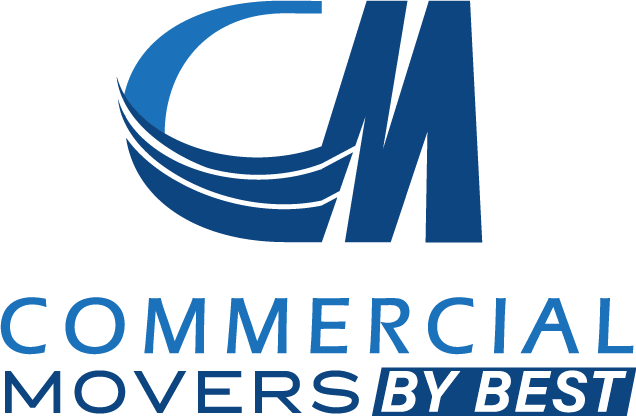Office moves don’t have to be overwhelming. With the right preparation and an office moving checklist in place, your business can relocate smoothly, minimize downtime, and get back to work faster.
Whether you’re expanding into a bigger space, downsizing, or simply upgrading locations, knowing how to prep for office movers is the key to a stress-free transition. Below, we’ll walk through the most effective office move preparation tips and business relocation planning steps to ensure your move is efficient, organized, and hassle-free.
Table of Contents
Key Takeaways
✔ Start planning your office move months in advance with a clear relocation plan and budget.
✔ Declutter and prepare both your current and new office to streamline moving day.
✔ Hire experienced commercial movers and confirm all logistics ahead of time.
✔ Involve employees with clear packing instructions and assigned responsibilities.
✔ Pack an essentials box and create a detailed moving-day plan to minimize downtime.
1. Plan Your Office Move Early (Months in Advance)
When it comes to an office move, starting early is everything. A rushed relocation leads to mistakes, unnecessary costs, and lost productivity. Planning several months in advance gives you time to organize, communicate, and execute efficiently.
Create a Relocation Plan and Timeline
Start with a structured relocation plan that outlines your goals, timeline, and budget. Factor in moving company quotes, IT setup, furniture installation, and lease obligations. A clear roadmap keeps the entire move on track and eliminates last-minute surprises.
Notify Stakeholders and Employees
Keep employees, clients, and vendors informed early. Let staff know their responsibilities, update your clients on potential downtime, and notify vendors of address changes. Proactive communication ensures everyone knows what to expect.
Update Business Information and Address
Don’t forget the small details. Update your business address across all platforms—bank accounts, tax records, Google Business Profile, website, and social media. This ensures a seamless experience for clients who rely on your services.
Design and Layout the New Office Space
Plan the layout of your new office in advance. Decide where desks, meeting rooms, IT equipment, and shared spaces will go. Having a floor plan ready will help movers place furniture and boxes efficiently, saving you time on move-in day.

2. Prepare Your Current and New Offices
With nearly 730 million square feet of office space spread across New York City’s five boroughs, it’s clear just how much room businesses occupy — and how easily clutter can build up over time. Clearing out unnecessary items is crucial.
Declutter, Discard, and Donate Unnecessary Items
Old files, broken furniture, and outdated tech don’t need to come with you. Shred confidential paperwork, recycle old equipment, and donate what you can. Decluttering reduces moving costs and ensures your new office is clean and organized from day one.
Clean and Organize the Current Office
Pack and label everything clearly. Group items by department or function to make unpacking easier. A well-organized current office allows movers to work quickly and minimizes the risk of lost or misplaced items.
Prepare the New Office in Advance
Before moving day, make sure utilities like electricity, internet, and phone systems are set up. Arrange for a professional cleaning so your team arrives at a fresh, ready-to-use space. Confirm parking, elevator access, and security passes for the movers.
3. Coordinate with Professional Office Movers
With more than 104,000 people employed in the U.S. moving services industry as of 2024, there’s no shortage of options—but not all movers have the expertise for complex business relocations. Partnering with experienced commercial movers ensures your office move is handled efficiently.
Hire and Vet a Commercial Moving Company
Research movers that specialize in office relocations. Look for licensed, insured professionals with proven experience. Read reviews, request detailed quotes, and book your move early to secure your preferred date.
Confirm Moving Day Logistics
A week before the move, confirm all details with your movers. Share building regulations, elevator reservations, and parking arrangements. Provide them with your office floor plan so they can place items exactly where they belong.
4. Involve and Prepare Your Employees
A successful office move is a team effort. Involving employees not only lightens the load but also helps them feel engaged in the process.
Provide Clear Packing Instructions
Give employees labeled boxes, packing supplies, and clear guidelines. Encourage them to pack personal items themselves and label boxes with their name and department. This keeps everything organized and prevents confusion during unpacking.
Assign Roles and Responsibilities
Assign department leaders to oversee packing and moving tasks. IT should handle servers and computers, while administrative staff manage sensitive documents. Delegating responsibilities keeps the process organized and efficient.
5. Final Office Move Preparation Tips for Moving Day
Moving day doesn’t have to be chaotic. A detailed plan and a little foresight can make the transition stress-free.
Create a Detailed Moving Day Plan
Designate a move coordinator to oversee everything on the big day. Have a checklist that includes movers’ arrival times, employee tasks, and emergency contacts. A single point of contact prevents confusion and ensures everything runs smoothly.
Pack an Essentials Box for Business Continuity
Prepare an “essentials box” with critical supplies: Wi-Fi routers, chargers, office keys, basic tools, first-aid kit, and important documents. Having these items at hand avoids downtime while you unpack and settle in.
What Is the Best Order to Pack Things When Moving?
Start with items you use the least—archived files, seasonal supplies, and decor. Then move to less essential office equipment and furniture. Save daily-use items, IT equipment, and employee essentials for last. This order reduces disruptions and keeps your business functional until the very end.
How to Not Get Overwhelmed Packing to Move?
Packing an entire office can feel daunting, but breaking it down into smaller steps makes it manageable. Use a detailed office moving checklist to assign tasks, set realistic deadlines, and track progress. Delegating responsibilities and tackling one section at a time helps maintain focus and control.
How Far in Advance Should You Start Packing Before Moving?
Ideally, begin packing non-essential items 4–6 weeks before the move. This gives employees enough time to prepare without interrupting day-to-day operations. Save important documents, IT equipment, and critical supplies for the final week before moving day.
How Do I Maximize My Packing for a Move?
Efficient packing saves time, money, and headaches. Use durable boxes, bubble wrap for electronics, and clear labels on every container. Bundle cables, accessories, and equipment parts in labeled bags. Group items by department or usage to make unpacking in the new office fast and organized.

Frequently Asked Questions
What should be included in a business relocation budget?
A business relocation budget should cover moving company fees, packing supplies, new office setup costs, and potential downtime expenses. By mapping these out early, you’ll have a financial safety net and ensure your relocation stays on track without hidden surprises.
How do I minimize downtime during an office move?
To minimize downtime, schedule your office move outside of peak business hours or over a weekend. Make sure IT systems are set up in advance at the new location, and keep an essentials box handy so operations can resume quickly. Careful planning ensures your team gets back to work faster.
Do I need moving insurance for an office relocation?
Yes, moving insurance is strongly recommended for an office move. It protects your company’s equipment, furniture, and files in case of damage or loss during transit. Check whether your commercial movers provide coverage or if you need additional insurance for peace of mind.
How can technology help with an office move?
Technology tools like project management software, digital inventory lists, and cloud backups make business relocation planning more organized and secure. Using these tools ensures sensitive files are protected and helps track everything during the move.
What should my employees expect on moving day?
Employees should expect clear communication about their roles, assigned packing responsibilities, and any temporary changes to work schedules. Preparing your staff ahead of time reduces stress and makes moving day smoother for both the team and the movers.
Make Your Office Move Smooth and Stress-Free
Office relocations don’t have to be stressful. With a clear office moving checklist, smart business relocation planning, and professional movers by your side, you can transition to your new space with minimal downtime.
If you’re preparing for an upcoming move in White Plains, NY, let the experts handle the heavy lifting. Contact Commercial Movers By Best today and get a free moving quote tailored to your business needs.


